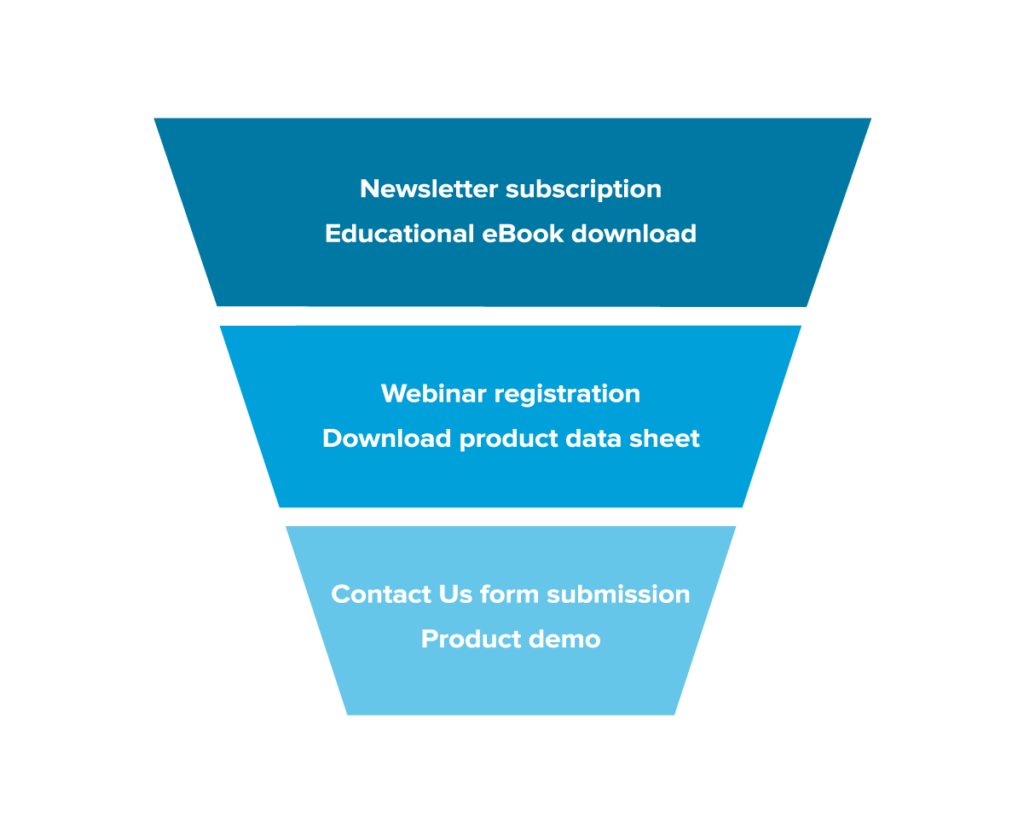Your website is converting, but maybe not at the level that you’d like it to. So you do a quick Google search to see how you measure up to the competition. Maybe you find that the average conversion of shoppers is worldwide is 2.95%. But what does this mean for your website? Your current conversion rate could be at 17%, or it could be barely breaking 1%. The bottom line is that your website isn’t converting at the rate necessary to move your business forward.
The problem with average conversion rates is that they’re missing context. And without context, you’re comparing apples to oranges. A website selling high-end consulting services isn’t going to have the same conversion rate as one selling discounted clothing, and a visitor submitting their email address to sign up for a monthly newsletter doesn’t hold the same value as an engaged lead submitting a form to schedule a product demo.
Industry benchmarks may seem like a good target to aim for, but they don’t take into account the details of your business. Specifically, what conversions are you looking to measure and who is the audience you are targeting with these offers? In order to set meaningful conversion goals that will generate real business results, you need to move beyond industry benchmarks and focus on converting high-quality leads that will benefit your sales team and your bottom line.
Not all conversions are created equally
The value of a conversion depends heavily on what actions are taken at each stage in the sales funnel and who the user is that takes these actions.
First, it’s important to determine what conversions you will measure at each stage in the customer journey. Some common conversions to measure include: newsletter subscriptions, eBook downloads, product demos, and more.
Next, it’s useful to determine the value of each of these conversions. This can be done by calculating the percentage of people at that stage in the buyer’s journey that your sales team typically closes into customers. Then, you must calculate the lifetime value of that customer. To estimate the value of a conversion, simply multiply the lifetime customer value by the typical close rate at that stage in the buyer’s journey.
Once you have a better idea of what a conversion is and how much it’s worth, it’s helpful to set criteria for who you are converting. Will you count anyone who converts, or only more qualified business leads who match one of your user personas? For bottom-of-the-funnel offers, it may be more important to factor out competitors or unqualified leads to gain a clearer picture of how many marketing qualified leads (MQLs), sales qualified leads (SQLs), and opportunities your website is generating.
Marketing automation software such as Hubspot or Marketo can help track the lifecycle stage of each lead and measure conversion rates with more contextual relevance. For example, the conversion value of anyone who submits an email address could be $5. However, the value of a lead that converts into an MQL on a Schedule a Demo page could be worth $7,000.
Conversion value generally increases as leads move further down the sales funnel. Once you have identified what conversions you’d like to track, how these will be measured, and how much each conversion is worth, you’ll be in a much better position to set conversion goals that are realistic for your business and relevant to its sales cycle.
Ways to improve conversion rates
Identifying smart conversion goals is only half the battle. How do you go about improving your website to meet these new ambitious goals? Here are a few ways to start optimizing your website for conversions.
1. Utilize UX best practices throughout your website design
If you have a beautiful website that doesn’t convert, all you really have is a digital brochure. Your company’s website should be its biggest source of customers and leads. If that’s not happening, it’s time to make adjustments. These conversion-focused UX principles will help turn your website into the marketing and lead generation machine it should be.
2. A/B testing
A/B testing offers one of the best ways to mitigate risk in decision making and figure out what works best for your website’s design. You can use A/B testing to optimize headlines, calls-to-action, images, or other aspects of the content on your website. The important thing to remember is to only change one element on a page at a time in order to avoid skewed results or complicate the research process.
3. Capitalize on top converting traffic channels
Not every traffic channel is going to be a conversion juggernaut for your business, and that’s OK. If improving conversion rates is a priority, it’s important to focus on the channels that consistently convert high-quality leads. To determine your best-performing channels, dig into your analytics reports and see where the majority of your traffic and leads are coming from. Then, devote more of your company’s marketing resources to these channels in the future.
4. Add video
As digital marketing has evolved, video content has emerged as one of the most effective tactics to help marketers cut through the noise while increasing engagement and conversion rates. According to stats shared by HubSpot, embedding videos in landing pages can increase conversion rates by 80%. Videos are a powerful way to convert new audiences by connecting with viewers in a more personal way.
5. Offer proof
Whatever claims you’re making on your website, be sure to back them up with proof. Customers today are savvier than ever, and they are skeptical of products or services that aren’t backed up by solid evidence. Strategically placed customer testimonials, case studies, and data can go a long way toward building trust and converting visitors into leads and customers.
The takeaway
Boosting conversion rates for your B2B website starts with an honest analysis of where you are today. Do you know what’s working and what’s not? Start by identifying areas for improvement and setting conversion goals based on real business objectives.
Once you have identified where the holes are in your digital sales funnel, you’ll be in a much better position to make changes that will fix them. When implemented strategically, small changes can have a big impact on your website’s ability to inspire users to take action.
If you’re still not sure where to begin, our talented team of conversion strategists would love to help. Get in touch to learn more about our conversion optimization process and how it can help you generate more qualified leads.





